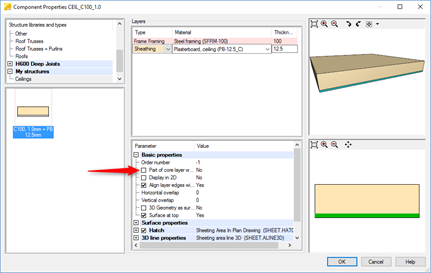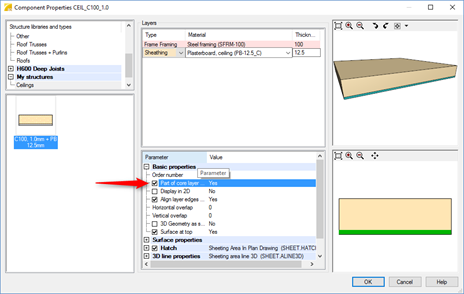Create Ceiling Structures for LGS Trusses
The ceiling structure has two main purposes. It defines where the underside of the truss will be and it provides a structure for engineering loads to be applied.
If you are using truss engineering, the ceiling structure must have at least two layers. The framing layer and a sheathing layer.
If you are not creating ceiling panels and trusses are able to be inserted correctly using one of the standard ceiling structures, there is no need to create a custom ceiling. However, you cannot make any changes to any structure listed under Standard Structures. If you want to make any changes, follow the steps below.
Create a New Ceiling
- Create a new library or use an existing custom library.
- Pick on any existing library, right click and select “Create New Library”
- Give your new library a name.
- Select and existing ceiling structure, right click and copy.
- Pick on the new library that was just created, pick inside the box below, right click and paste.
- Change Name, File and Description to suit. There cannot be any duplicates of name and file within the same folder.
- In the layer’s section, change the framing and sheathing layers to suit. Select the required materials and ensure that the thicknesses are correct.
- Change the core layer settings to suit. This is a tick box under basic properties and defines where the ceiling structure is going to be placed in relation to the ceiling level (as defined in System parameters, but it is usually top of wall frames). You should only need to change the sheathing layers. The bottom of the truss bottom chord is the bottom of the framing layer. There are generally 2 desired settings.
- The bottom chord of the truss sits directing onto the top plate. The sheathing layer is then positioned below the top of the top plate. In the case, untick “Part of core layer”

b.The bottom chord sits on a binder plate, meaning that the bottom of the bottom chord is the thickness of the sheathing above the top of the top plate. In this case, tick “Part of core layer”

